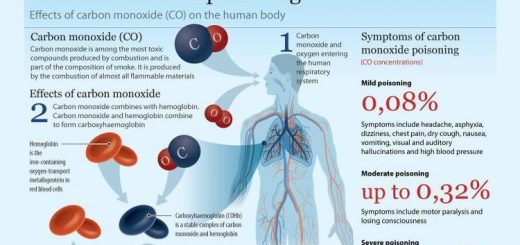The Earth, Importance of Earth’s atmosphere, hydrosphere, gravity, pressure and temperature
The Sun occupies the centre of the solar system, the Earth is one of the eight planets revolving around it. The Earth is the planet that we live on, The ozone layer protects living organisms from the harmful ultraviolet radiations. The temperature on the Earth‘s suits the life of living organisms due to the presence of the Earth in the third position according to its distance from the Sun.
The Earth
The Earth is a spherical object, which is about to be completely circular accompanied by a slight flatting at the two poles, and indented outward at the equator, where the tropical radius is about 22 km larger than the polar radius. The tropical radius is larger than the polar radius because the Earth is slightly flattened at its poles and indented outward at the equator.
The Earth with the other planets revolves around the Sun by the action of gravity. The Earth completes one revolution around the Sun in 365.25 days. The Earth occupies the third position according to its distance from to the Sun. (it is preceded by Mercury and Venus). The distance between the Sun and the Earth is about 150 million kilometers.
Concerning volume, the Earth occupies the medium position in the solar system because it is the biggest inner planet and it is smaller than any planet from the outer planets. It occupies the fourth order (ascendingly) regarding the volume, and its average radius is about 6386 km approximately.
Earth’s mass is considered as the biggest mass in the inner planets of the solar system. Its mass is 5.9 × 1024 kilograms. Characteristics of the Earth that support the continuity of life are atmosphere, Hydrosphere, suitable temperature, Gravity & Suitable atmospheric pressure.
Earth’s atmosphere
The Earth is surrounded by an atmosphere as it appears like a white colour around the Earth in the picture captured from the Moon’s surface. The Earth’s atmosphere consists of a group of different gases, Nitrogen gas (78%), Oxygen gas (21%), Carbon dioxide gas (0.03 %), Water vapour (variable percentage), and other gases (very little percentage).
The major component of the atmosphere is nitrogen gas. The presence of a white colour surrounds the Earth due to the presence of the atmosphere that appears as a white colour around the Earth.
Importance of the Earth’s atmosphere
The gases of Earth’s atmosphere have great importance in the continuity of life, Oxygen gas is used in the respiration process of living organisms, it helps in the combustion (burning) process of fuels. Nitrogen gas reduces the effect of oxygen gas during burning processes, plants use it to form proteins. Carbon dioxide gas is used by green plants in the photosynthesis process to form food for other living organisms including people.
The great expansion of the atmosphere in space helps in burning millions of small falling meteors completely before reaching the Earth’s surface. It helps in reducing the high speed of large meteorites and burning a part of them before they hit the Earth’s surface.
The weather and climate phenomena take place in the atmosphere, such as wind movement, clouds formation, and rain falling to complete the water cycle. Earth’s atmosphere participates in keeping the Earth’s temperature suitable for life. It contains the ozone layer, which protects living organisms from harmful ultraviolet rays.
In the absence of the ozone layer in the atmosphere, the ultraviolet rays will reach the Earth‘s surface and harm living organisms. When there is no atmosphere, there will be no life on the Earth‘s surface and its surface is exposed to destruction due to falling of space bodies on it easily.
Earth’s hydrosphere
Water bodies such as oceans, seas, lakes and rivers represent about 71%, and Land, such as mountains, plains, valleys and islands represent 29%. Water is divided into salty water and fresh-water, Salty water represents 97% of the water area on the Earth’s surface. It exists in the ocean and seas.
Freshwater represents 3% of the water area on the Earth’s surface. It exists in Rivers, Lakes, Snow at the two poles, and groundwater in the pores and cracks of the rocks that form the solid mass of the Earth.
Importance of hydrosphere
Water is necessary for the life of all living organisms (plants, animals, and humans), where: Plants use it in the photosynthesis process to form food. Man and animal benefit from it in completing food digestion and absorption processes in the digestive system. Water shares in blood formation, and it keeps the constancy of body temperature.
Water keeps the temperature on land during day-night within the proper limits of living organisms. It represents a suitable environment for large numbers of living organisms, where more than 50 % of known living organisms live in aquatic environments.
Suitable temperature
The temperature on the Earth‘s surface is suitable for the continuity of life of living organisms at day and night due to the presence of the Earth in the third position according to its distance from the Sun.
Gravity
The Earth has the force of gravity that makes life continues through constancy and steadfastness of objects and living organisms on its surface, the steadfastness of the hydrosphere position on its surface, and keeping the Earth surrounded by the atmosphere.
The steadfastness of the hydrosphere on the Earth’s surface due to the gravitational force of the Earth. Keeping the Earth surrounded by the atmosphere due to the gravitational force of the Earth.
Suitable atmospheric pressure
The Earth is characterized by the pressure of suitable atmospheric pressure (air pressure) of about 76 cm.Hg, this pressure suits the continuity of life on the Earth‘s surface.
The planet Earth is suitable for life due to the presence of water, the presence of the atmospheric envelope containing oxygen gas, which is needed for life. Its temperature is suitable during both day and night. Its atmospheric pressure and its gravitational force are suitable.
The inner structure of the Earth
Scientists think that the inner part of the Earth was in a molten form at its origin due to the high temperature of Earth’s core. As a result of the revolution of the Earth around its centre, the heaviest metals (iron and nickel) descended towards the centre, and the lightest components in density ascended upwards.
This led to the formation of several layers. Each layer has its own characteristics that distinguish it from the others. The Earth (as the egg) consists of three layers arranged from outside to inside as follows:
- The first layer is Earth’s crust, It is a relatively light outer layer, That ranges between 8-60 km approximately.
- The second layer is the mantle, It is a rocky layer, it is about 2885 km approximately.
- The third is the core, the outer core is a layer of molten metals, it is about 2100 km approximately. the inner core is a solid layer rich in iron and nickel, and its radius is about 1350 km approximately.
The Earth‘s inner core is rich in iron and nickel because they are from heavy elements that descend towards the centre of the Earth due to its rotation around its centre.
Earth’s crust, Types of rocks, Igneous rocks, Sedimentary rocks & Metamorphic rocks
Stars, Galaxies, Solar system, Planets, Moons, Asteroids, Meteors, Meteorites & Comets
Earth’s rotation around the Sun and the sequence of the four seasons
The components of the Earth’s atmosphere and the importance of them
Atmospheric pressure maps and the instruments for measuring atmospheric pressure



